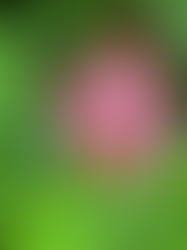Homeschooling Garden Club - Bees
- Nicola Walsh

- Jul 13, 2020
- 3 min read
Recently, I was challenge about the flowers in my garden and not having enough for the bumblebees and pollinators. I asked for some help with ideas on how I could improve my garden from you and one of parents kindly pointed me to the Bumblebee Conservation Trust website. I am far more hopeful about my garden now than I was. One of the things I noticed about their list was it was seasonal so that there was food all year round. So I can afford to make this a year long project and spread the cost a little.
The Bumblebee Conservation Trust recommend the following plants for the garden I have coloured the list with blue where I have already got these plants. Do let us know here at the Orchard Training Homeschooling Garden Club how well you are doing on in your own garden with the list and your recommendations for the bees. Those left black in colour are on the list to buy. As you can see, there is more-blue than previously thought. It didn’t take too much persuasion to have the wild strawberries planted up under the apple trees. That item on the list will turn blue as soon as they are planted
Shade Areas
Spring
Lungwort
Hellebore
Comfrey
Winter heather
Summer
Wild strawberry
Monks hood
Aquilegia
Borage
Autumn
Cat min
Grown ivy
Mahonia
Sunny Areas
Spring
Crocus
California lilac
Pieris
Dicentra
Summer
Viper’s bugloss
Lavender (Lavender Anouk)
Foxglove (plus Digitalis firecracker)
Geraniums
Autumn
Verbena
Sunflowers
Cosmos
Honeysuckle
Winter
Snowdrops
Herbs
Marjoram
Thyme
Sage
Chives
Mint
Rosemary
Trees
Apply
Cherry
Willow
Plum
Blackthorn
Ponds
Water mint
Forget-me-not
Iris
meadowsweet
Here is some more information I found interesting. In the UK, we have over 250 species of bees. These consist of 24 bumblebee species, one honeybee species and the rest are made up of solitary bees. For Design and Technology, we will be building our own solitary bee homes.
Identifying the bumblebees that visit your garden is easy as checking out their tail colours.
There are three main ones to look out for the white-tailed bumblebees, the red-tailed bumblebees and the ginger-yellow bumblebees. You can make a chart and record this is your diary as Maths.
Did you know that by identifying bumblebee species you can help to conserve them too? You can do this by adding your bumblebee sightings to the online wildlife recording survey iRecord, or by signing up for BeeWalk, a UK national monitoring scheme. Where you go out for a walk once a month, recording the bumblebees you see along the way. What is not to like here PE and Science in a walk. The Educational Welfare Office will be impressed!
It is easiest to start identifying a bumblebee by its tail colour, followed by the number of bands on its body. On the Bumblebee Conservation Trust website, you will find all the info you need.
I have signed up for an afternoon course later this summer to help me be more bee friendly and I will be sharing that info with you, as time goes by. I am thinking about if my garden could be big enough to have a bee hive. Until then this is what I have learnt so far:
Whether you have a window box, allotment or large garden, planting bee-friendly flowers can help boost your local bumblebee population. In return, they will dutifully pollinate our flowers, crops, fruits and vegetables.
No matter what size garden you have, you can do your bit for bumblebees by planting at least two kinds of bee-friendly flower for every flowering period. Bee-friendly flowers are rich in pollen and nectar which bees can easily access throughout the year.
The best habitats for bumblebees are those that offer plenty of flowers to feed on during the entire active phase of the bees’ lifecycle (from March until October). This will ensure that there is a good supply of pollen at all of the crucial times:



























Comments